Interactions with Your Customer Can Be the Basis for Liability for Patent Infringement
March 21, 2013
Hamilton Brook Smith Reynolds Alert
- The relationship between a company and its customer is usually not enough to establish liability for direct patent infringement, but it can create liability for induced patent infringement.
- The present trend in law may encourage more patent litigation based on customer and supplier relationships.
- Companies may wish to review instructions provided to customers and contracts with suppliers to ensure they are not encouraging performance of elements of a known patent.
In a precedential opinion, Aristocrat Technologies Australia Pty Ltd. v. International Game Technology, the Federal Circuit applied the teaching of its en banc ruling in Akamai Technologies, Inc. v. Limelight Networks, Inc. to a typical customer/company relationship. The Court found that, where individual steps of a claim are performed separately by a company and its customers, the act of encouraging or prompting the customer to take action would not be enough to establish liability for direct patent infringement. A company normally cannot be vicariously liable for direct infringement based on the action of encouraging its customer. However, that same act of encouraging a customer to take action could be sufficient to establish liability for the company as an indirect patent infringer for inducing infringement.
It is important to note that inducement liability still requires knowledge of the patent by the alleged infringer. This means that a company cannot be liable for induced infringement before learning of a patent. Direct infringement, however, does not require that an accused infringer have prior knowledge of the patent.
The Customer's Actions Count Toward Possible Infringement Liability
In the Aristocrat case, the patents-in-suit were directed to a computer network for controlling casino slot machines and an incentive system for enhancing the chances of winning a jackpot. The patent claims detailed how the incentive system worked. Each claim included an element that required some action by the slot machine player - the customer. The patent owner claimed that the defendants encouraged the players to take the actions covered by the patent claims. The patent owner argued to the lower court that the combined actions by the defendants and their customers met all of the elements of the claims and established liability for direct and indirect (induced) infringement. The defendants, in turn, argued that their actions and the actions of their customers (the slot machine players) were insufficient, singly or in combination, to establish liability for direct or indirect patent infringement. The lower court agreed with the defendants and granted summary judgment in their favor.
On appeal, the Federal Circuit reiterated the standard for direct infringement: the patentee must prove that each and every element of a claim was performed by the defendant "either personally or vicariously," or alternatively, "either personally or through another acting under his direction or control." Continuing, the Court stated that "the control and direction standard is satisfied in situations where the law would traditionally hold the accused direct infringer liable for the acts committed by another party. . . . " Direct infringement, the Court noted, does not extend to situations where "multiple independent parties" participate in joint conduct that meets the limitations of a claim. "Independent parties," presumably, are parties that are not in a principal/agency type of relationship or other contractual relationship that might traditionally give rise to vicarious liability.
Applying the standard, the Federal Circuit ruled that for there to be liability for direct patent infringement, the gaming company defendants "must exercise direction and control" over the players - or customers - using the slot machine. The Court ruled that encouraging and inducing a player to use the slot machine was insufficient to establish a direction and control relationship. "[A]bsent that agency relationship or joint enterprise, we have declined to find one party vicariously liable for another's actions."
Turning to induced infringement, the Court observed that even though no single party was actually liable for direct infringement, there still could be liability for induced infringement. The Court stated that with respect to the conduct at issue - the defendants performing all patent steps except one, and encouraging their customers to perform that last step - "the adduced evidence could support a judgment in [patentee's] favor on a theory of induced infringement." The Court then remanded the case for further proceedings.
The Business Implications
This decision is favorable for patent owners and may give rise to more allegations of patent infringement based on a customer or client relationship.
Companies may want to review whether their customers or suppliers are performing any steps of a known patent related to the companies' business. If so, it may be prudent to institute measures to avoid encouraging customer and supplier actions and hence avoid a charge of induced patent infringement based on the combination of its own activity and encouragement of its customer/supplier conduct. For example, if a company provides requirements to suppliers or instructions to customers, this action may create liability for indirect or induced infringement if the company is also performing the remaining patent claim elements.
To learn more about direct and indirect patent infringement, contact Brian Moriarty or your regular practitioner at Hamilton Brook Smith Reynolds.




